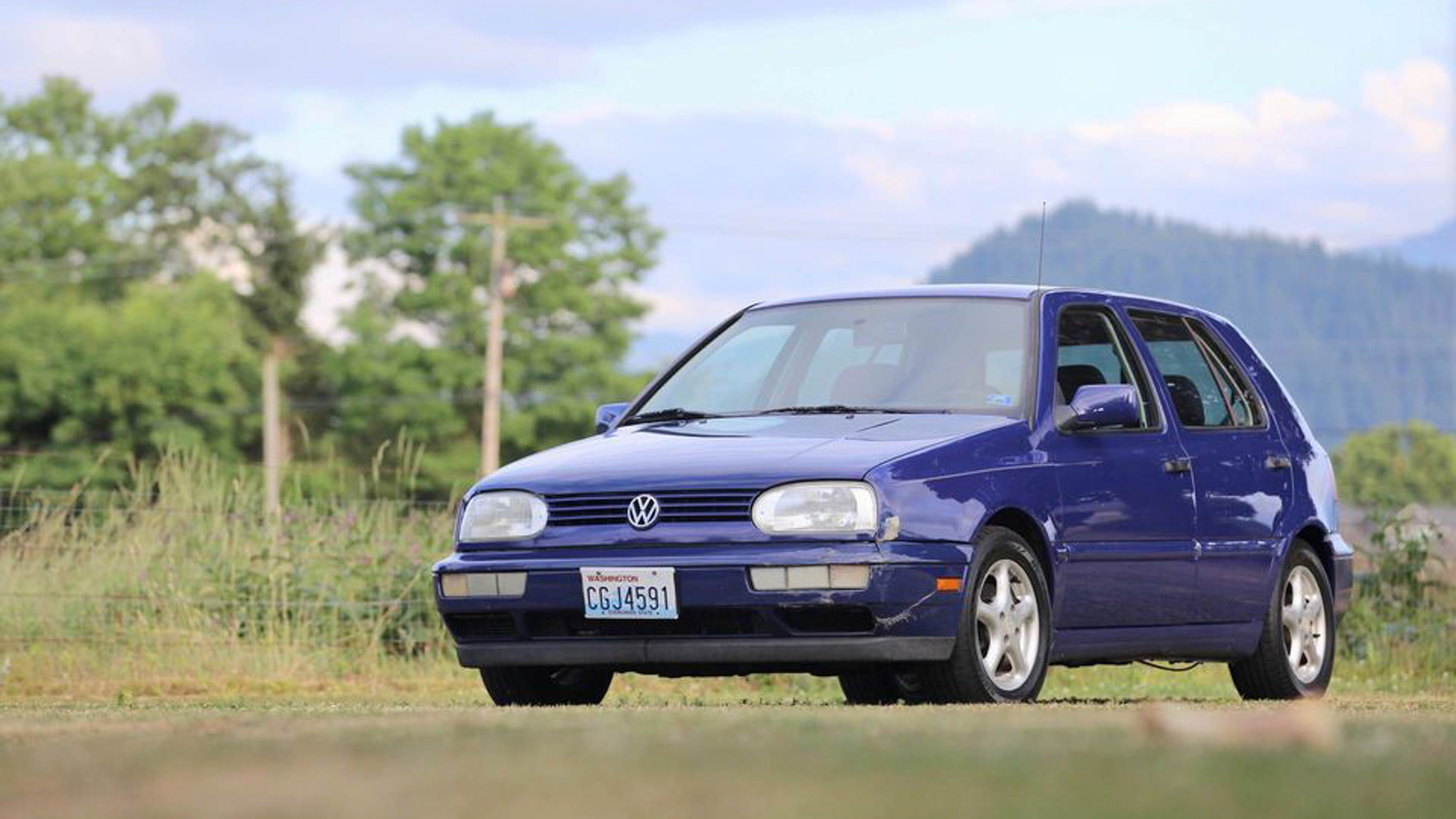

In the early 1990s, Volkswagen had one of the most unique and interesting cars on sale in the United States—the Mk3 Golf Harlequin. Under its skin, the VW Harlequin was just a normal Mk3 Golf but its body panels were painted in four different colors, creating a mismatched “Harlequin” look. Volkswagen built 264 Golf Harlequins for the U.S. market and Jim Ellis, who owned two VW dealers in Georgia, made them even more unique by swapping their body panels to make the country’s only single-color “Harlequins.” However, making them more unique wasn’t the intention.
Volkswagen Golf Harlequins were painted with a combination of Chagall Blue, Ginster Yellow, Tornado Red, and Pistachio Green. While Harlequins were initially desirable cars among Volkswagen enthusiasts, it’s rumored that interest began to wane before Ellis could sell all of his inventory. So he decided to swap the body panels of eight cars to create single-color cars that were more desirable for the average customer.

Ironically, after all eight sold and eventually hit the secondhand market, the single-color cars have since become ultra-rare and highly desirable among VW enthusiasts. So what started out as rare oddballs from the factory were then turned into average looking cars, only to become even rarer and more desirable than they originally were.
There’s currently a one-color Chagall Blue Golf Harlequin for sale on Facebook Marketplace and it’s said to be car number 123. The seller states that he took the car to Jim Ellis in Georgia and was told it was the only all-Chagall Blue Harlequin ever made. Like all other Harlequins, the interior has gray cloth seats with a unique color pattern, featuring all four of the Harlequin colors.



Look deeper than the Harlequin’s colorful skin, though, and you’ll find a basic Mk3 Golf’s underpinnings. Its 2.0-liter naturally aspirated four-cylinder still makes only 115 horsepower and its five-speed manual still powers only the front wheels. It isn’t quick and it isn’t sporty but it’s a special, interesting slice of Volkswagen history and that’s understandably enough to drive enthusiasts wild.
Got tips? Send ’em to tips@thedrive.com